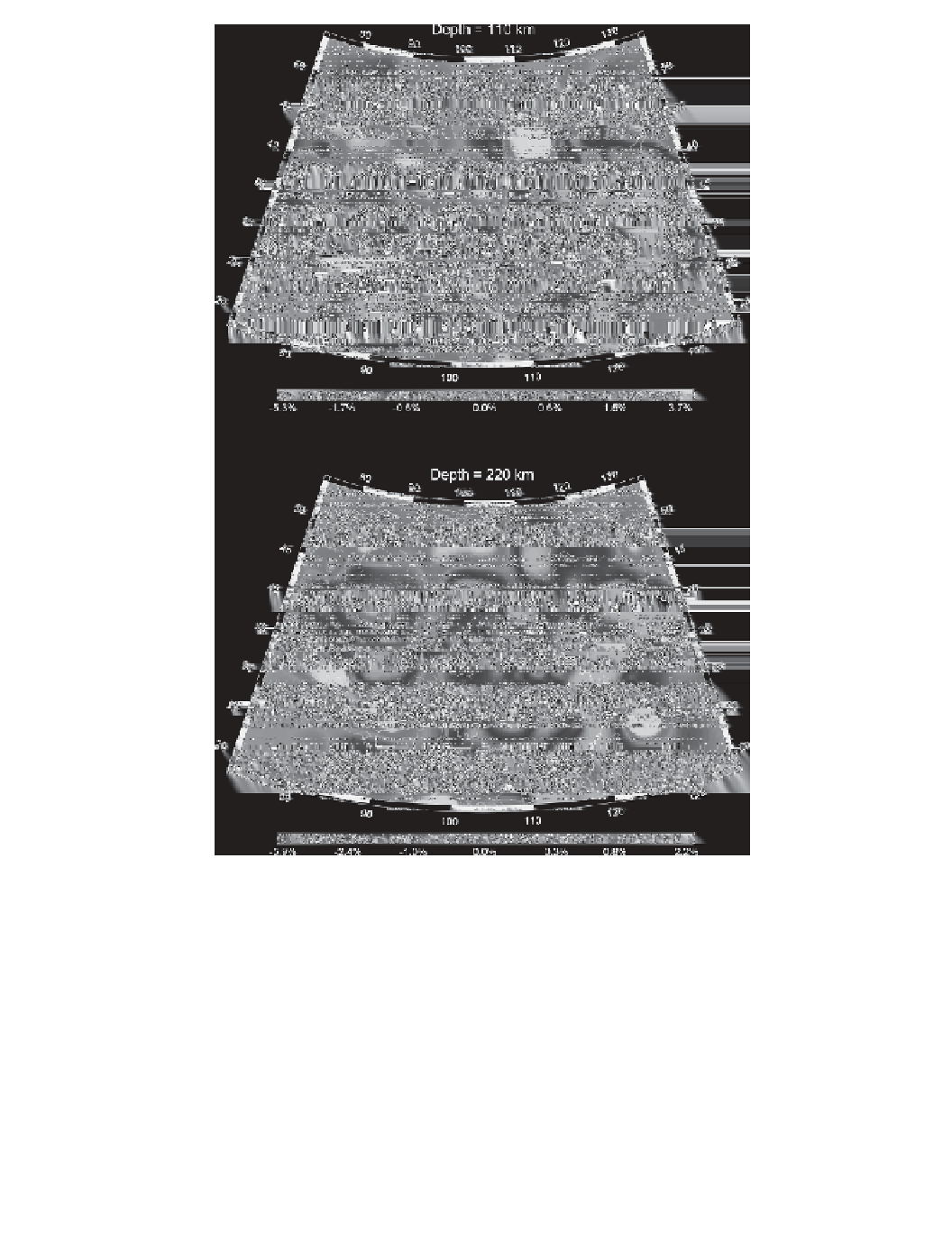Geoscience Reference
In-Depth Information
(a)
(b)
Figure 5.3 P-wave travel time seismic tomography of China and the surrounding regions. (a) P-wave
velocity perturbation at 110 km depth. (b) P-wave velocity perturbation at 220 km depth. From Liu
coastal regions in the east. Hence, the low-velocity mantle structures under North China
may be a horizontally expanded “mantle wedge” above both the active subducting slab in
the western Pacific and the stagnant slabs beneath much of the North China Plain (Huang
western Pacific trench and the sinking of the Mesozoic and Cenozoic slabs now trapped at

